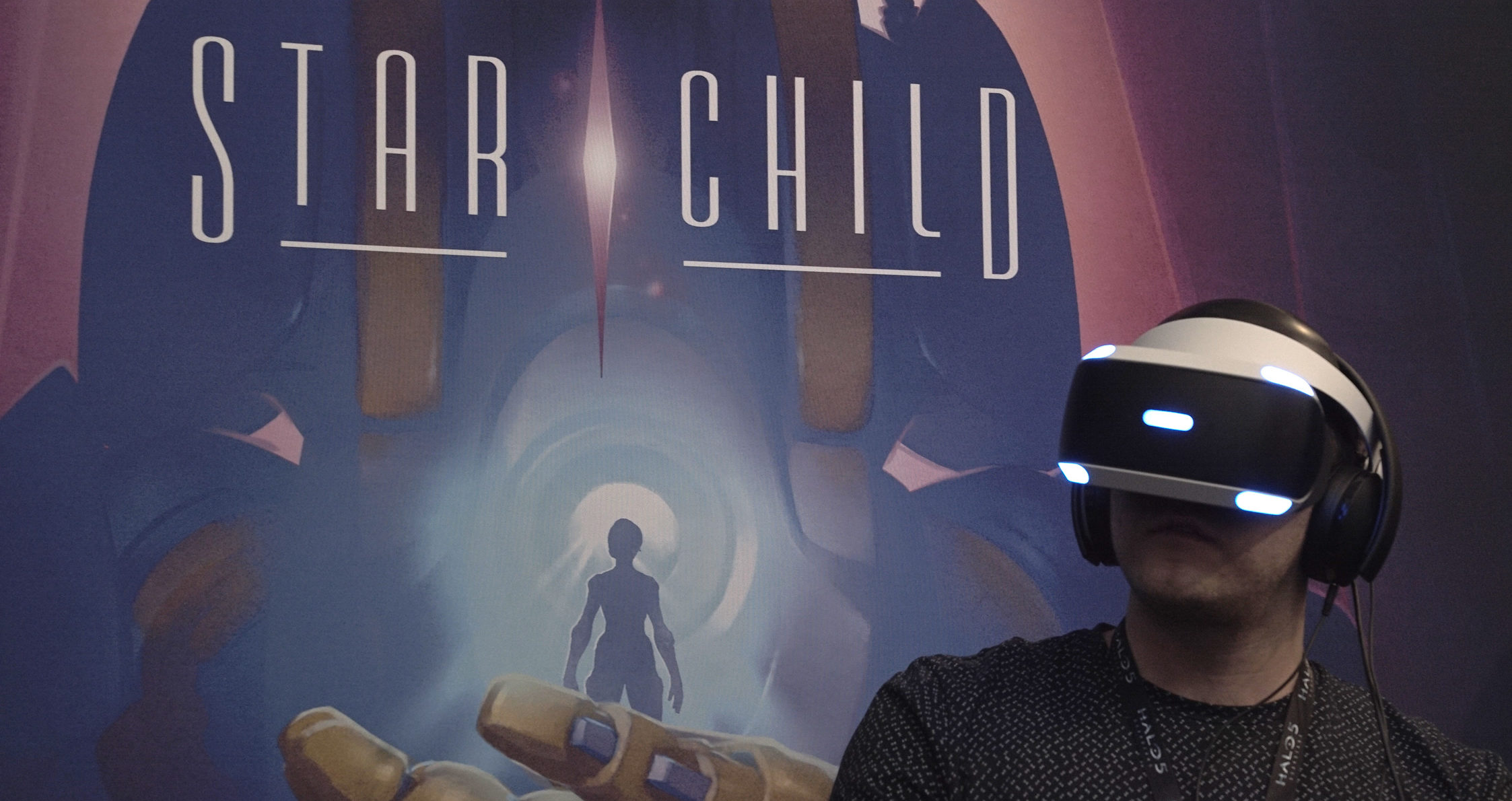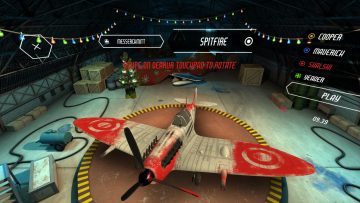
Hands-On: Star Child
We love featuring VR content at shows like PAX East. This game happens to be the first that we’ll be showcasing this weekend, and it’s setting the bar pretty high.
Unlike your prototypical VR experience, Star Child is an adventure game. Playful, the game’s developer, describes the experience as a “cinematic sci-fi platformer”, which when translated out of marketing-speak, means an atmospheric, side-scrolling platformer with puzzle elements. Star Child follows Spectra, an explorer of the universe, as she becomes stranded on an alien planet and contends with an overwhelming hostile force. Our demo was brief, but it gave us a good idea of what to expect. Spectra’s ship is lowered deep under the surface of the planet, and a neon-bathed cave formation reveals itself. You guide her through simple platforming and puzzle-solving, and as the action progresses deeper into the caves, a huge insect-like enemy reveals itself before an ancient robotic figure rescues you.
What Star Child lacks in immediate challenge, it more than makes up for in visual resplendence. Thanks to the power and increased resolution of the next-generation PS VR headset, the game’s world comes to life in lush and wondrous detail. If you’re not used to the platform, every VR game carries a certain sense of wonder and awe with it, but Star Child definitely ups the ante. Mysterious bugs and creatures fly in and out of your vision. Individual blades of neon-tinted grass wave in the breeze. Sparkling crystals distort the environments and monsters hidden behind them. It’s always tough to describe the appeal of VR games if you don’t actually have the headset on, but trust us – the game looks great.
That said, many VR games have pretty and absorbing graphics, so that alone doesn’t make a title special. Star Child stands out, though, by incorporating the unique perspective afforded by VR into the gameplay. Crystals and pillars will scroll by in the foreground as Spectra walks around, so you’ll need to move your head in space to see around them. Because it’s a side-scroller, you get an interesting view on the proceedings as you physically look around, casting your gaze far beyond Spectra to discover what challenges lie ahead. You’ll need to crane your neck upward and downward to find the rest of a particular puzzle objective, and the list goes on.

The big takeaway is this: Star Child is one of many examples of the maturation and evolution of VR as a platform. Game developers are beginning to take advantage of VR’s unique features and perspective; in doing so, they’re also helping to move the platform away from the half-baked, gimmicky games and movie tie-in “experiences” that defined its formative years. For the time being, VR remains a relatively expensive and niche proposition for gaming, but as the creative games keep launching and the prices keep dropping, that may change. If you build it, they will come, right?
Star Child launches later this year exclusively on PlayStation VR.




![Private: [ID: KwT0BqX2QR8] Youtube Automatic](https://lastminutecontinue.com/wp-content/uploads/2024/10/private-id-kwt0bqx2qr8-youtube-a-360x203.jpg)

